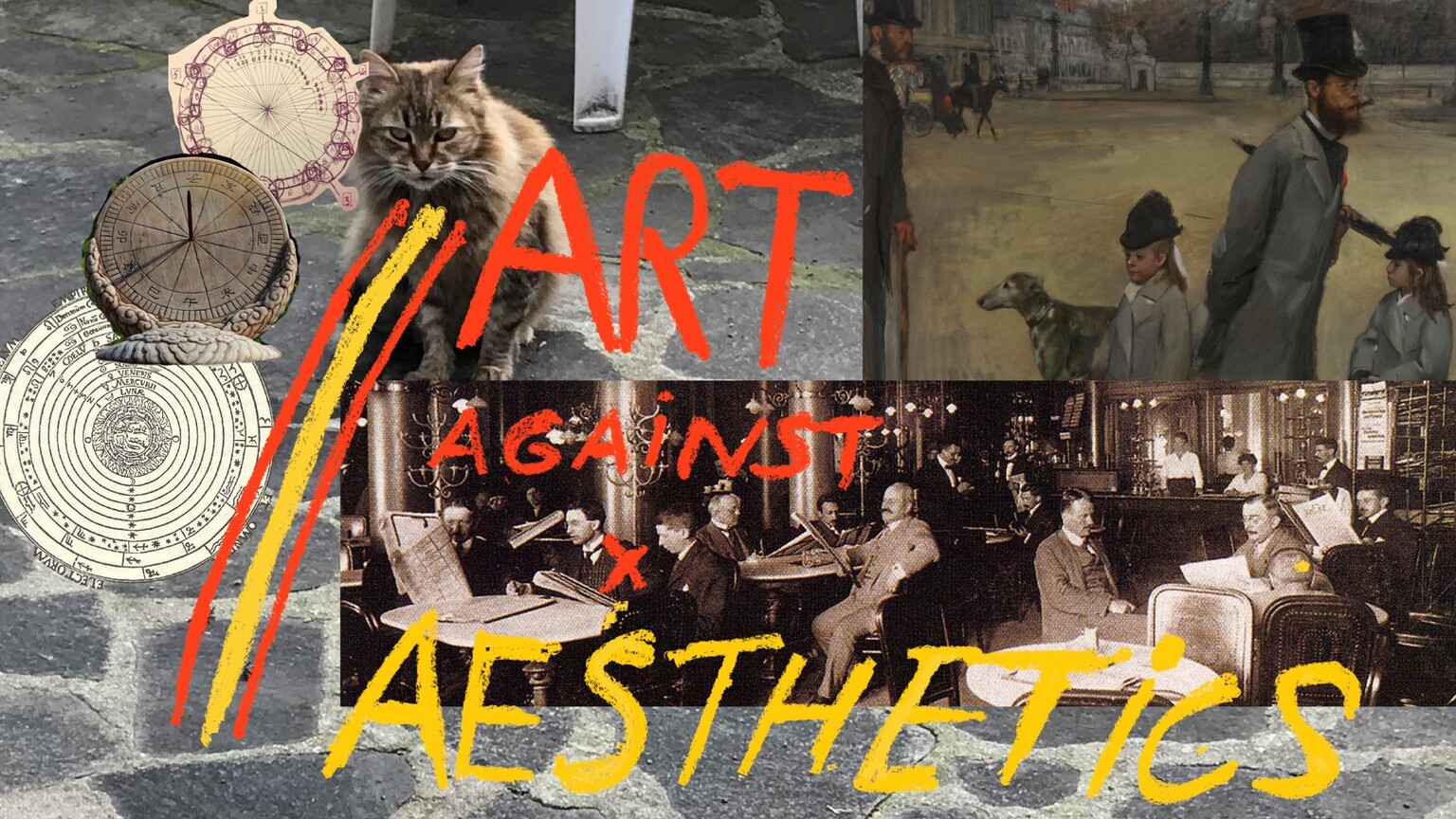Forelesning

Jan Verwoert / Art Against Aesthetics
As part of the course What’s Your Sign at the Academy of Fine Art, professor Jan Verwoert will host this talk to start off the course – the talk is open for everyone.
Art inspires modes of cosmic orientation. People practice art daily when they feel out where they are between earth and sky. Cosmetics for example offers ways of orienting the cosmos towards you (hence the name) by modulating planetary forces of attraction through the application of color and contour. Art gets made all the time.
Modern aesthetics, on the other hand, were designed to train the bourgeoisie in methods of systematic recognition: The training emboldened the bourgeoisie to look at culture and nature as objects of observation, ready to be read and ruled. So the human sciences researched foreign cultures in preparation for their imperial conquest.
As Edward Said showed, the imperial bourgeoisie tried to prove the superiority of modern scientific readers over supposedly 'ancient' cosmic makers of art by amassing the spoils of imperial conquest in national museums, for urban readers to inspect them aesthetically, at their leisure, and assure themselves of the power of methodic study.
When rulers are readers and readers rulers, whoever still makes art — and 'naively' submits artefacts for reader-rulers to show off how 'sophisticated' they are at decoding them — becomes discriminated as a 'lower' class of 'folk' to be ruled over (in the imperial imagination this includes children, users of cosmetics, rural populations, and people of colonised cultures). Ironically, the price the ruling class paid for their rule was the loss of art making from their ranks, getting the Romantics and Hippies among their kids trapped in a nostalgia for the 'lost art' of 'true folk'.
Today much art discourse still seems stuck in this modern mindset when success is measured in terms of how fast art renders itself readable (instagrammable), how fluently artists can interpret their work in public (in terms of scientific research), or (on the flip-side) how boldly you can shock ’n’ charm the bourgeois by playing the true-folk bad-boy. Can we please exit this imperial charade. How?
As part of the course What’s Your Sign at the Academy of Fine Art, professor Jan Verwoert will host this talk to start off the course – the talk is open for everyone.